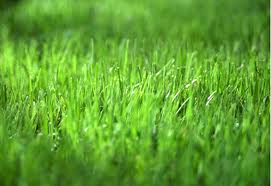It can be tempting to bag and dispose of grass clippings, especially if it’s been a long time since your lawn was last mowed. After all, clumps of cut grass sitting on your lawn are  unattractive, and they can smother the grass underneath if they aren’t removed.
unattractive, and they can smother the grass underneath if they aren’t removed.
Mowing more often, on the other hand, creates a free source of nutrients that can and should be left behind to decompose in your lawn. The trick is to follow the “1/3 Rule,” mowing often enough so that no more than 1/3 of the grass blade is removed with each cutting. It’s also important to mow only when the grass is dry, and to use a sharp mower blade.
The clippings left behind will fall down between the blades left standing, returning valuable  nutrients to the soil as they decompose. This practice is known as “grasscycling,” and it can provide your lawn with up to 15% of the nutrients it needs for healthy growth.
nutrients to the soil as they decompose. This practice is known as “grasscycling,” and it can provide your lawn with up to 15% of the nutrients it needs for healthy growth.
Not only is grasscycling a great way to improve your lawn’s fertility, but it helps to reduce the amount of yard waste sent to landfills as well. Grasscycling is becoming much more common, and that’s a good thing considering that one lawn can generate roughly 300 pounds of clippings per 1,000 square feet each year. Imagine what would happen to our landfills if nobody bothered to grasscycle!
Grasscycling also cuts down on the time it takes to mow, since bagging and disposal of clippings are eliminated. In the long run, this beneficial practice leads to a healthier, greener lawn that requires less fertilizer and effort to maintain.


